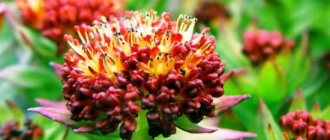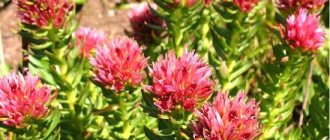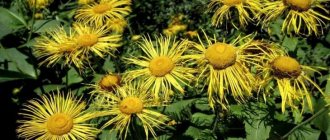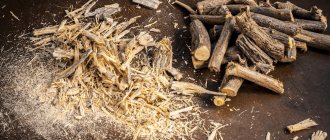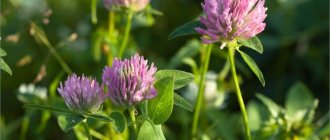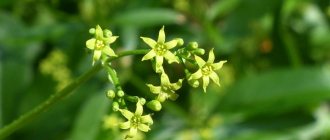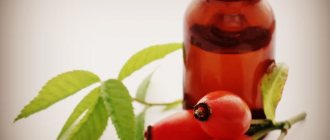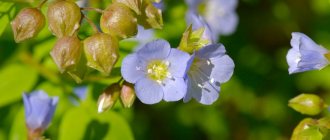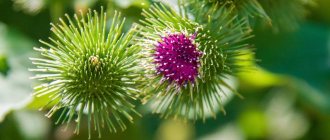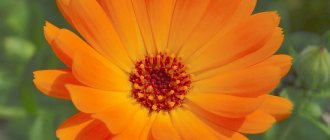Red root: benefits and how to use: UGC Red root is known as an effective remedy for maintaining male and female health. Herbal medicines from this plant have a broad effect and are actively used in medicine. What is special about red root and how to use it correctly to get the maximum benefit?
Botanical description, homeland and distribution
Kopeechnik (from the Latin Hedusarum - literally - pleasantly smelling) belongs to the large legume family. Several generic varieties are found in nature - mainly perennial herbaceous plants, subshrubs and shrubs.
Interesting. The scientific name for the plant was given by the famous Swedish naturalist, Carl Linnaeus in the 18th century. He also introduced Kopeechnik into the unified classification of flora and fauna.
In Ukraine, the plant is commonly called Solodushka for its spicy aroma and nectar. Russian folk analogues of the names of Kopeechnik are Gedizar, Baduy, Sardana, Red Root, Denezhnik.
The plant's beans are round, slightly elongated, elliptical in shape. The bean fruits are constricted transversely, slightly pubescent, pendulous, and consist of 2-5 flat segments.
The root system is powerful and thickened. The root is woody, taprooted, and goes deep into the soil, which increases the plant’s tolerance to arid climates.
The stems are tall, there are branched, branching and erect species. The length of the stem reaches up to 80 cm. The flower arrow emerges from the shoots. The shoots are shortened and develop at the basal neck.
The stipules are brown in color, scaly, large, fused together. There are 4-10 leaves on short petioles arranged in pairs on the stem. The leaves, depending on the species, are oval, rounded, ovoid in shape. The leaf blade along the edges, below and along the main vein is slightly pubescent with short hairs.
Peduncles are longer than the leaves and are located at the top of the stem. The flowers are bright, fragrant, purple or lilac in color, collected in loose clusters of 15-30 pieces.
The seeds are small, up to 3 mm, olive-brown in color.
Are there any analogues?
The red root, whose medicinal properties affect all systems of the human body, has no absolute analogues, because identical plants cannot be found in nature. But there are some drugs and dietary supplements that help treat the same diseases as pennywort.
The figure lists the medicinal properties of the red root.
- For the male genitourinary system: Vitaprost suppositories and tablets; Afala dissolving tablets; Prostan in different release forms; Prostatilen suppositories and ampoules.
- For water-salt balance: Canephron tablets
- To increase potency: Super P-force, Fuzhunbao Super and Vimax capsules, Speman tablets, Tentex muscle injection solution.
- For cystitis: Cyston.
Species and habitat
In total, there are about 300 varieties of plants in nature. Up to 130 species have been recorded in the CIS, 45 of them have been studied and included in reference books, dictionaries and encyclopedias. The most famous species are the yellowish kopek, alpine.
The natural growth zone is spacious steppes, meadows, forests and tundras, mountain slopes, highlands, and river valleys.
The generic and specific name of Kopeechnik is characteristic; it acts as a kind of guide, defining the plant’s habitat zone:
Siberian pennyweed (alpine) grows in the European part of Russia, Siberia, the Far East, and Northern China.
Arctic pennyweed grows in the Far East.
South Siberian - in Altai and Siberia.
The Crimean Kopeechnik is found in the Crimea, the Caucasus and the Balkans.
Reference. The large-flowered and grey-headed pennywort are listed in the Red Book of Russia as endangered species and are protected by the state.
Reviews about the effectiveness of treatment
98% of patients who left reviews note positive results in one area or another: from a simple increase in tone and energy to the relief of symptoms of diseases. Men say that the root really affects potency, but it does not give a quick effect for 1 night, but slowly but efficiently solves the problem.
Healthy men in this regard experience vigor and increased sexual desire for their partner. Plant-based products are often purchased for the prevention of prostatitis, etc. After using it, buyers do not observe signs of illness or side effects.
It is not for nothing that the red root has been used by the Altai peoples for a long time. Its properties affect the entire body, providing a healing effect. Products with it can be prepared or bought; in any case, it does not require a lot of money, but the effect will last a long time.
Chemical composition and action
Herbalists value the Altai, forgotten and tea plant for its content of unique chemical compounds, trace elements and vitamins.
The main active ingredient of the green plant is xanthones (the strongest antioxidants of plant origin):
- magniferin – antiviral activity (herpes, chickenpox, herpes zoster, cytomegaloviruses);
- isomagniferin – stimulation of cellular and humoral immunity.
Active components of the aerial part:
- alkoids are nitrogen-containing substances that are useful for blood viscosity, strengthening the heart muscle and nervous system;
- coumarins – improve the functioning of the gastric tract, remove salts and fluid;
- tannins – an astringent for diarrhea and dysbacteriosis;
- steroid saponins – have an anti-sclerotic effect, relieve inflammation, regulate water-salt metabolism;
- flavonoids (polystachoside, hyperoside) - P-vitamins - affect hematopoiesis, reduce capillary fragility;
- ascorbic acid (in leaves) – a natural antiseptic, immunomodulator;
- microelements (manganese, zinc, copper, cobalt, rubidium, nickel) – cell builders, support of the endocrine system, joints;
- macroelements (potassium, calcium, iron) – increase vascular permeability, improve the condition of hair, nails, and skin.
The tap root contains:
- up to 40% polysaccharides – providing a moisture reserve for the skin;
- up to 34% of oligomeric catechins (bioflavonoids) – removal of heavy metal salts from the body, catechins color the roots of the tea kopeck in a reddish color;
- sulfur-containing sugar is present in the rhizome of the forgotten Kopeechnik (the plant is distinguished by an astringent, slightly sweetish taste).
Side effects
- tonic;
- antioxidant;
- stimulating.
Red root tincture for men has another effect. It affects the central nervous system, helping a man cope with the stress of every day. He becomes more morally stable, less irritable and more optimistic.
It is important for every man to always remain young, not depend on age and be full of strength. The photo shows a red root that will help solve all problems of this kind!
- relieves pain in inflammatory diseases;
- dilates blood vessels;
- stimulates blood circulation in the pelvic organs;
- improves male libido;
- relieves spasms.
The preparations are herbal based. Well tolerated by patients. Side effects may include allergic reactions due to individual intolerance to the components of dietary supplements.
Contraindications include individual intolerance to the red root or auxiliary components of the drugs.
It is also not recommended to take the following medications:
- pregnant and lactating women;
- for liver pathologies;
- if the patient has had or has thrombophlebitis;
- with alcohol addiction;
- for traumatic brain injuries and brain pathologies;
- with a tendency to allergic reactions to dietary supplements.
Red root should be prescribed with caution to people with severe renal failure. Medical supervision required
Red root preparations are not recommended for women during pregnancy and lactation.
General tonic, anti-inflammatory, antispasmodic, anti-exudative, vasoprotective, vasodilator, diuretic, antioxidant.
Allergic reactions in rare cases.
Clinically significant interactions with other medications have not been established. Its simultaneous administration with antibacterial agents is possible.
The “Red Root” drug, made from the tea plant, is a fairly effective remedy for improving the functioning of the organs of the male reproductive and urinary systems. The biological supplement has a positive effect on blood circulation and helps get rid of congestion in the tissues of the prostate gland, restoring its normal functioning.
claim that taking the product can qualitatively improve a man’s sex life due to its properties that stimulate the reproductive system. As a result, a man's libido increases and sexual activity increases.
We advise you to study - Burdock for men with prostatitis - how to “cook” and use the root?
In addition, certain components of the plant can have a strengthening effect on the walls of capillaries, reducing their permeability to liquids and biological molecules. This effect is very important for the treatment of many different pathologies.
The rhizome contains substances that can have a certain general strengthening effect. First of all, it consists in normalizing the functioning of the organs of the digestive system, heart, lungs, and blood vessels. The result of taking the drug is also moderate stimulation of the heart muscle (myocardium).
The medicinal plant has a certain tonic effect on the human nervous system. General fatigue is reduced, and the body’s recovery process after daily physical and psychological stress occurs faster. Thanks to this, the drug “Red Root”, reviews of which from men indicate an improvement in the quality of sexual life, increases physical endurance and sexual activity.
Tea plant is also known for its ability to increase the body's protective function and its ability to resist various infectious diseases. It is also important that the drug can be taken without fear of an addictive effect. Currently, no clinically significant drug interactions have been established.
Currently, no clinically significant drug interactions have been established.
when used together with other drugs. It is possible to use the drug simultaneously with antibacterial agents.
The drug "Red Root" can cause allergic reactions to the chemicals contained in this plant. It is especially worth noting that such manifestations can be of varying intensity.
Medicinal properties, benefits
The main therapeutic and restorative characteristics of Kopeechnik:
- main function – restoration of male strength and sexual activity, prevention and treatment of impotence;
- elimination of inflammatory processes in the genitourinary system (including congestive processes in the prostate gland);
- increased blood flow, for older people, useful for cerebral circulation;
- strengthens the walls of blood vessels, cleanses the blood, has a beneficial effect on the composition of the blood in case of anemia;
- root decoctions are used to prevent leukemia;
- helps with male and female infertility;
- stimulates intestinal function, affects gastrointestinal motility;
- infusions and decoctions from the root of the plant resist the formation of cancerous tumors and benign formations;
- natural immunostimulant, tones, enhances endurance, increases performance during increased physical activity;
- There are no toxic substances in the composition; teas and infusions of the plant can be consumed regularly to cleanse the liver and kidneys;
- directly affects metabolic processes;
- mild diuretic, removes swelling, removes salts;
- herbal tinctures resist the penetration and spread of viruses and infections, stimulate the body's defenses;
- Kopeechnik herb relieves inflammation, pain symptoms and spasms, eliminates skin diseases;
- stimulates the functioning of the nervous system;
- An expectorant and anti-inflammatory effect was noted for bronchitis, bronchial asthma, and pneumonia.
Biochemical composition of the plant
Red root consists of a large number of unique substances:
- Flavonoids. These are plant polyphenols (pigments) that give color to flowers, leaves and stems. There are also flavonoids that have no color. These substances help with problems with the cardiovascular system, strengthening the walls of capillaries, and fight spasms in all parts of the body.
- Catechins. They are organic antioxidants, i.e. substances that neutralize free radicals. They remove heavy metal ions from the body, strengthen the immune system and blood vessels. They have restorative properties. Thanks to them, the plant's decoctions become rich red.
- Saponites. Plants with saponites are often used in medicine to combat wet coughs, as they help remove phlegm. They affect the mucous membranes of the bronchi and stomach (this accelerates the absorption of nutrients), normalize the salt and water content in the body.
- Tannins. Concentrated in the root part, they have a pleasant but slightly astringent taste. The main biochemical function is to bind proteins. Therapeutic effects: fixation of diarrhea, acceleration of metabolism.
- Estrogens. Female sex hormones. Thanks to them, the red root is prescribed during menopause.
- Xanthones. A class of substances that stabilize the central nervous system.
- Alkaloids. Plant organic substances with nitrogen as a molecule. They prevent the proliferation of harmful microorganisms and have a mild analgesic effect.
- Amino acids. The basis of proteins in the body.
- Vitamin C and polysaccharides.
Application
Nature has endowed Kopeechnik with many invaluable properties. For more than 100 years, the plant has been used in a variety of fields:
Agriculture. South Siberian, forgotten, alpine and other low-pubescent plant species are grown as fodder crops for animals. Coronet Kopeechnik is used as a pasture plant; it is used for processing and making hay and silage.
Decor and home floriculture. Owners of dachas and personal plots specially breed large species of Kopeechnik - large-flowered, Fedchenko - in their gardens and front gardens. A low South Siberian variety with practically no silvery stems is planted in flower beds; the plant harmonizes with bright flowers and shrubs.
Cooking. Fans of culinary delights boil the root core of the pea-shaped and Sakhalin kopeechnik in milk and use it as desserts, casseroles and main courses.
Beekeeping. The plant is an excellent honey plant. Its glands secrete sugar-rich nectar (an aqueous solution of sucrose, glucose, maltose), which attracts bees.
Ethnoscience. Healers in Siberia and Altai use Red root and Bear root for many pathologies of internal organs and to protect the body from malignant tumors.
Medicine and pharmacology. Based on alpizarin, contained in Altai and yellowing Kopeechnik, the antiviral drug Alpizarin (fine-crystalline powder) is produced. Used internally to treat herpes simplex. Alpizarin ointment-2% is also used in the early stages of herpes infection of the skin and mucous membranes.
Tea recipe, instructions for use, duration of treatment
If you decide to experience the miraculous power of the red root, then adopt recipes for its use. Strictly follow the instructions provided and maintain the proportions so as not to cause harm to health.
The recipe from folk therapy is quite simple - it is crushed red root and vodka, in other words, a vodka tincture known to everyone. You can make a tincture from the red root yourself; probably someone you know has ever infused herbs in vodka, or at least made decoctions at home, preparing them according to folk recipes.
If you managed to get real and correctly collected penny root, you can independently prepare different formulations for treatment at home.
Making tea
You can brew tea using red root. Some places sell ready-made drinks with this ingredient, and sometimes you can make your own.
To achieve a powerful effect, you should drink such teas in a course. Usually 10 days are enough to see positive results from treatment with a medicinal plant.
For the tincture you will need about 50 grams of pure raw materials and half a liter of vodka. Rhizomes must be well dried and cleaned. They should be thoroughly crushed. Some people do this with a knife, while others use a blender.
The prepared raw materials should be filled with vodka. The tincture is prepared for at least a week. Then the product is filtered. The composition is taken three times a day, half a teaspoon. The tincture is dissolved in warm water and drunk on an empty stomach.
To achieve maximum results, it is important to take the formulation for at least three months. If this is not enough, the course of treatment can be repeated
However, it is important to take a break. There should be a month of rest between courses of treatment. Then the treatment is carried out again.
It is important to take good care of your health and not to undergo all the treatments that relatives or friends recommend. If in doubt, it is better to consult with a good specialist and get recommendations from him
This way you can preserve youth and virility for many years.
Collection and preparation
To benefit Kopeechnik, the grass must be collected on time and properly prepared. Healers from Altai and Siberia give some advice:
- plant raw materials are harvested at the time of bud formation or during flowering (the raw material mass during this period is maximum, the composition contains a high content of magniferin);
- leafy stems are cut with a sharp knife or a special sickle (you cannot break them off);
- the grass is dried in the sun, spread out in one layer;
- turn over periodically;
- after 2-3 days the raw materials are ready (dried stems break easily);
- Wetting of the stems and dampness during drying is unacceptable;
- the finished raw materials are threshed;
- the ground mixture is stored in a dark place in a glass container with an airtight lid;
- Shelf life – no more than 1.5-2 years.
Tablets: instructions, doses
The healing properties of the red root have been noticed not only by alternative medicine. Drugs containing it are produced by well-known pharmacological companies, such as Evalar.
Red root Forte in capsules from the domestic company Aklen
The pack contains 15 capsules of 0.5 g each. The main part of the mass is kopeck powder, the manufacturer also indicates the composition as E470 (fatty acids) and E551 (silicon dioxide). According to its intended purpose, the product is a dietary supplement (dietary supplement) and is used as a supplement during meals: 1 pc. 3 times a day. The course lasts no more than 2 months and can be repeated after a break.
We advise you to study - Erectile dysfunction - what it is, what it involves, how to treat it?
Tablets Red root from Evalar
The package contains 60 tablets consisting of red root, zinc oxide and vitamin E. It is recommended as a means of maintaining potency, but can be used in the treatment of serious diseases of the urinary, reproductive, and respiratory systems. Accepted 1 piece. 2 times/day with food. The course lasts 30 days, you can repeat it after 10 days.
Contraindications
Medicinal herbs usually have restrictions on their use. If you are interested in herbal medicine, you should not blindly prescribe regimens, doses and courses of treatment for yourself. Carefully, with the permission of a doctor, it is recommended to use tinctures and herbal teas with Kopeechnik in the following cases:
- individual intolerance, drug, spring, contact allergies, negative reaction to any flowering plants;
- Children under 14 years of age, pregnant women and during breastfeeding are not allowed to take medications (including traditional healing medicine) without the approval of a doctor;
- for hypertensive patients and people with serious heart pathologies (stroke, heart attack, acute heart failure) Kopechnik is contraindicated even in small quantities;
- For psychoses, neuroses and other nervous disorders, it is not recommended to use grass.
Attention! At the first symptoms of an allergic reaction (nausea, choking, skin rash, vomiting, pain in the stomach and liver, excitability), stop use, avoid contact with the plant, and call a doctor.
When precautions are needed
Situations arise when the use of red root is not contraindicated, but is undesirable due to some nuances:
- In adolescence, the plant will not harm the child’s body, but it can cause acne on the face and create an excess of energy.
- Due to the stimulating properties, teas and infusions with bear root are not recommended to be drunk at night to avoid problems falling asleep. People with insomnia or people prone to nervous breakdowns and hysterics should also think about it before taking it.
- Due to the constipating effect, it is better to eat more vegetables and fruits during the course of treatment, otherwise constipation will occur. For the same reason, older people prone to constipation should avoid taking it.
- During treatment you should abstain from alcohol. Despite the fact that balms and tinctures contain alcohol, additional consumption of alcoholic products will worsen the results of the course, although no side effects appear.
Medicinal recipes
For medicinal purposes, Caucasian kopechnik, forgotten (Bear root) and tea plant (Red root) are used.
For inflammatory skin pathologies (eczema) and skin diseases, wash the damaged areas with aqueous tincture of Kopeechnik. The infusion is prepared simply – 2 tbsp. l. chopped herbs are steamed with 1 liter of boiling water. Let it brew for 1-2 hours, strain. Treat skin 3 rubles. per day.
For acute prostatitis, impotence, and neoplasms in women (fibroids, fibroids), microenemas with water infusion are used. Recipe (for two doses) – 1 tbsp. liters of dry crushed raw materials are poured with 0.5 liters of boiling water. Cover with a lid and leave for 1 hour. Strain through a fine sieve. The duration of treatment is at least 10 days.
For advanced forms of prostatitis and adenoma, alcohol tincture helps. Method of preparation: add 50-70 g of red root to 0.5 l of 40% alcohol or vodka. Place in a dark place for 20-25 days (stir once a day). Reception regimen – 1 tsp. 30 minutes before breakfast and lunch. The course of treatment is 30 days.
The Red Root contains saponins that irritate the gastrointestinal mucosa. For people with disorders of the microflora of the stomach and intestines, tea and drink from the red root can cause nausea and vomiting.
Kopeechnik roots are reused for alcoholic infusion, increasing the preparation time to 2 weeks.
Attention! It is not recommended to use healing infusions, teas, compresses and lotions before bedtime. Kopechnik has a stimulating and stimulating effect, which can lead to restless, interrupted sleep and insomnia.
Red root beneficial properties and contraindications
Red root is a medicinal plant that belongs to the legume family - a herbaceous perennial, its stems can reach half a meter in height. But its main medicinal part is hidden underground and is very large: the root reaches 12 meters in length and 12 cm in thickness. The leaves are elongated, shaped like an ellipse. Pennywort blooms with medium-sized flowers of purple or dark crimson color. The flowers are collected in long racemes; the flowering period begins in June and lasts until the very end of summer. The fruits of the plant are beans, fluffy or bare, flat in shape.
The red root is also known by other names - it is often called tea kopeck or forgotten kopeck. Common names: Bear root (it is believed that bears love to eat it), blood root (for its red color), white root. The root is called red for the shade of the root itself, and for the color of the medicinal tinctures obtained from it.
The places where the red root grows are a variety of landscapes - it is found in forests, mountains, and meadows. The red root is often found in the tundra; it also thrives near rivers. It suits different climates: red root is found in both Europe and Asia. The plant is known to be found in North America and Africa. In Russia, the favorite places for the red root to grow are the Sayan Mountains and the Altai Mountains. At the same time, despite its wide geographical distribution, the red root is quite rare in each region and is not easy to find.
Preparation and storage
Both the upper part of the plant and its underground component are used for medicinal purposes. The leaves and flowers are harvested when the red root is in bloom. The plant is cut at a height of 0.3 meters, dried in the sun, but in a place protected from rain and moisture. The leaves of the plant are also used fresh - they can be stored in the refrigerator for about 30 days.
It is customary to collect roots at the end of summer and beginning of autumn, when flowering is already over. The roots of adult plants are suitable for medicinal purposes. When digging, at least 1/3 of the root should be left in the ground. Extracting roots from the ground requires considerable strength - the roots hold tightly and go deep into the soil. After this, you must leave the place where the harvest was made and not return there for at least 10 years for the plant to recover. The dug up roots are cleaned of soil and foreign impurities, cut and dried. Small roots are dried whole. After the roots are dried, they can be stored in a dry, ventilated area for no more than 3 years.
Chemical composition
The healing effect of the red root is provided by a large number of active substances in its composition. Among them are catechins, which have an antioxidant effect, have a beneficial effect on blood vessels, and help eliminate heavy metals from the body. The presence of catechins gives color to the roots of the plant and is especially pronounced in infusions from it. Thanks to tannins, the red root has a slightly astringent taste and also has an anti-inflammatory effect.
The healing effect is also provided by the combination of Coumarins, Saponins and a number of flavonoids in the red root. The plant contains amino acids important for health, xanthone hedysaride, as well as essential macroelements, some alkaloids, a number of polysaccharides and Vitamin C.
The red root has the ability to accumulate selenium in its composition, which has a strengthening effect on the circulatory system.
Application in medicine
Red root has long been used as a plant that has a powerful positive effect on men's health. It exhibits a non-hormonal stimulating effect on the reproductive system. Healers often recommend the red root for prostatitis and various related diseases, prostate adenoma. The active ingredients of the red root help relax the prostate muscles and normalize blood circulation in the problem area. Ultimately, this leads to a significant improvement in potency and increases male strength, enhances desire, and improves sexual function. Problems with urination and male infertility are also indications for the use of red root. A well-chosen course of treatment helps men cope with chronic pain in the genital area.
It should be noted that the red root is not an exclusively “male” plant; it is also recommended for women for a variety of gynecological problems and diseases of the mammary glands. Thus, among women's ailments that can be treated with the help of the red root, fibroids, fibroids, and uterine bleeding. It is considered an excellent preventative that helps prevent the development of breast cancer.
Another area of application of red root is the treatment of diseases of the cardiovascular system. Tea pennywort has a beneficial effect on the heart and also helps cope with anemia.
For respiratory ailments, red root preparations help relieve coughs and have an expectorant effect. It is recommended for hemoptysis and fever, bronchitis, pneumonia and tuberculosis. The use of red root brings relief from symptoms of asthma, as well as pleurisy.
Diseases of the genitourinary system can also be treated with herbal medicine using red root. Tea plant has a beneficial effect on the bladder, promotes the loss of excess fluid, and improves diuresis in general. This helps get rid of swelling, and the anti-inflammatory effect of the red root makes it possible to use it in acute periods of diseases, for example, cystitis. For kidney diseases - pyelonephritis, nephritis - the red root also has a beneficial therapeutic effect.
For many diseases, the use of red root has an analgesic effect. It also helps restore normal muscle tone. When used regularly, tea kopek helps improve blood composition. Its properties to increase hemoglobin levels are useful for anemia and symptoms of anemia.
Gastrointestinal problems can also be treated with red root. It is recommended to drink it for diarrhea and rectal prolapse. It is effective for liver diseases, as well as dropsy.
The antitumor effects of the red root are known, due to which it is one of the herbs recommended for cancer.
In general, products based on red root have a strengthening effect and help restore immunity.
Eating red root helps to establish the proper functioning of the central nervous system. It can have a calming effect and ensure healthy sleep. When using the red root, headaches go away, manifestations of neuroses decrease, overall health improves, and fatigue goes away. It helps to recover from heavy physical exertion, restoring strength, and also has a beneficial effect on the psycho-emotional state, calming and giving confidence. This is an excellent prevention of nervous breakdowns.
Traditionally, a delicious aromatic tea is prepared from the red root, which can be consumed either pure or with the addition of milk, or for sweetness - with sugar or honey (especially useful for colds). Kopeechnik tea is often consumed in the form of a decoction, and tinctures are also prepared from it. For some diseases, external use of the red root is indicated, including in the form of enemas.
It is not recommended to use red root in childhood (under 12 years), as well as during pregnancy and breastfeeding. Contraindications for use are hypertension, heart attack, and a tendency to nervous excitability.
Application:
Adenoma Urolithiasis Prostatitis Enuresis Anemia Diarrhea Impotence Infertility Urethritis
Contraindications
Pregnancy Children under 12 years of age Lactation Increased nervous excitability Cardiovascular diseases Hypertension Myocardial infarction and others
Recipes
Red root - tincture For tuberculosis, bronchitis, pneumonia, anemia, anemia, inflammation of the prostate gland, for reproductive disorders in women and men, for infectious diseases: influenza, ARVI, sinusitis
Pour 50 grams of crushed root into 500 ml. high-quality vodka, leave for 14 days in a cool, dark place, shaking occasionally, strain. Take 0.5 - 1 teaspoon 3 times a day, diluted in 50 ml. water, 30 minutes before meals.
Tea. Increases the performance of the cardiac system, normalizes fluid levels in the body, improves cerebral circulation, raises body tone, increases physical endurance, effectively relieves fatigue. Pour 1 teaspoon of crushed root into 1 glass of boiling water, leave for 20 minutes, strain. Take hot, 1 glass 2 times a day.
Tea: pour 25 grams of crushed roots into 1 liter of boiling water in a thermos, leave for 1 hour, strain. Take hot (like tea, the roots are tea leaves), with the addition of honey and milk.
For influenza, ARVI, uterine bleeding, gynecological diseases, impotence, urethritis, prostatitis, diseases of the bladder, kidneys, headaches, epilepsy, pour 1 teaspoon of crushed roots into 1 glass of boiling water, leave for 1 hour, strain. Take 1/4 cup 4 times a day.
Tincture. For herpes, pour 50 grams of crushed root into 100 ml. alcohol, then add 0.5 liters of 20% alcohol to the resulting mixture, mix thoroughly. Leave for 2 weeks in a dark place, shaking occasionally, strain. Take 30-40 drops, 30 minutes before meals, 3 times a day. The course is 1.5-2 months.
Tincture To increase immunity, strengthen the body, for vitamin deficiency
Pour 50 grams of crushed root into 1 liter of vodka, leave for 2 weeks in a dark place, shaking occasionally, strain. Take 1 teaspoon 3 times a day, diluted in 50 ml. water.
Balm For prostatitis, adenoma, impotence, diseases of the gastrointestinal tract, neuroses
Take 30 grams of crushed root, 30 grams of propolis. Pour the collection into 0.5 liters of medical alcohol, shake thoroughly, leave for 10 days in a cool, dark place, shaking occasionally, strain. Take 30 drops 3 times a day, 30 minutes before meals. The course is 30 days, a break is 2 months and the course is repeated.
For impotence, infertility, cystitis, urinary retention, uterine bleeding, uterine prolapse, rectal prolapse, pyelonephritis, nephritis, breast diseases, cancer, pour 1 tablespoon of crushed root into 0.5 liters of boiling water, simmer in a water bath for 30 minutes, leave 2 hours, strain. Take 1 glass 3 times a day. Course - 1 month.
For prostate adenoma, prostatitis, tuberculosis, bronchitis, bronchial asthma, pleurisy, pneumonia, pour 2 tablespoons of crushed root into 1 liter of boiling water in a thermos, leave overnight, strain. Divide the resulting infusion into 3 doses, take 1 dose 3 times a day.
Preventive tincture: 25 grams of crushed root, pour 250 ml. 40°C alcohol, leave for 7 days in a dark place at room temperature, shaking daily, strain. Take 20 drops 2 times a day, 30 minutes before meals for preventive purposes.
Decoction Restores sexual functions in men and women, activates the functioning of the respiratory system, improves and cleanses the blood, normalizes water-salt metabolism
Pour 10 grams of crushed root into an enamel pan, pour 200 ml. cooled boiled water, heat in a water bath for 30 minutes, leave for 1 hour. Strain, bring the volume to the original volume with boiled water. Take 2 tablespoons 3 times a day, before meals.
Microclysters For acute prostatitis, fibroids, fibroids, impotence, genitourinary diseases, adenoma
Pour 1 teaspoon of crushed root into 1 glass of boiling water, leave for 12 hours in a thermos, strain. Divide the resulting infusion into 2 servings. Make microenemas with infusion at a temperature of 36-37°C, morning and night. Course 10–12 days.
Unique facts
The name Red Root was given to the tea plant because of the rich color of the root, and in terms of the amount of useful substances the plant is equal to the Golden Root (Rhodiola rosea).
Bears, after a long hibernation and in case of illness, to restore strength and health, intuitively choose their medicine - Kopeechnik.
To obtain the plant, doctors and healers of the last century had to work hard. According to legend, gatherers used hand winches to pull out the massive root.
In conclusion, it should be said that Kopeechnik is an invaluable natural non-toxic immunostimulant. In Siberia and Altai, tonic decoctions with Bear root have long been drunk to support physical endurance, men's health and longevity.
Release form
Redroot is a perennial plant that can be over 80 years old. The above-ground part reaches 50-60 cm in height. Only the roots are valuable for human health. Since they go quite deep, their extraction is a labor-intensive process.
Properly prepared Altai root (it got its name from its homeland) is an excellent medicine for many disorders. It cures only when collected at the appropriate time and from a mature plant.
Interestingly, animals do not shy away from this plant. Bearroot is another name derived from the bears that dig up the rhizomes for their own use.
Procurement rules
In order for the male root to produce its full effect, it is necessary to dig up the rhizomes in September-October. To prevent the plant from being damaged, re-collection of raw materials is possible only after 10 years. During this period, the roots grow back and the tree does not suffer.
Ready tablets
One of the easiest options is to purchase ready-made tablets at the pharmacy, which contain red root. This form of medication has its advantages in that thanks to the tablets it is possible to maintain the permissible dose of the drug.
The tablets should be taken twice a day with meals. The course of treatment should not be more than one month. But if the man received insufficient effect, he can repeat the course in a month.
Red root tea
Pharmacies now sell ready-made tea in bags, which you just need to brew. But you can cook it yourself.
To make tea from the root you will need:
- a teaspoon of chopped root;
- a glass of boiling water.
To prepare the tea, you need to pour boiling water over the root and let it brew for about 20 minutes.
Drink like regular tea 4 times a day. The course of taking the healing decoction should not exceed a month, after which a break of 10 days must be taken and the course can be started again. This remedy will help with the prostate and for conceiving a child.
Tincture
This form of the drug can be purchased either ready-made at the pharmacy, or you can prepare an alcohol tincture yourself.
To do this you will need:
- half a liter of vodka;
- 50 grams of crushed red root.
Before taking, half a teaspoon of infusion must be diluted in a glass of water. Use the solution with meals three times a day. The course of treatment should not exceed 90 days.
This form of the drug can be easily prepared at home.
- 30 grams of chopped root;
- liter of boiling water.
The plant must be placed in a thermos and filled with boiling water. Let it brew for at least an hour, then strain the broth.
You need to drink this decoction twice a day, regardless of food. The maximum duration of the course is one month.
Red root dietary supplement is available in several forms:
- Tablets of 500 mg in blister pack No. 60 in a cardboard box.
- Tincture (drops) 50.100 ml in a dark glass bottle in a cardboard package.
- Tea (finely ground powder in bags) 2 g.
- Powder in cardboard packaging weighing 30 and 50 g.
We advise you to study - Dead bees to increase potency - how to use it for a man?
The red root is offered for sale in the following forms:
- Tea – powder in filter bags.
- Ground plant root. The powder is sold in packages.
- Pills. Consist of the following components: pennywort powder, vitamin E and zinc oxide.
- Alcohol tincture is produced in bottles of various sizes.
Brief introduction
This is a very specific type of root, six years old. The color is not always red, it can vary from light yellow-beige to brown-red.
In order to preserve its beneficial properties, it is processed in a special way: after exposure to steam, it is dried in air, it is protected from sunlight. This drug is stored in wooden boxes, wrapped in paper, completely ready for use.
Read about the use of red root for men.
There are several types of this healing plant, each of which is good in its own way:
- Korean, the richest of its fellows in useful substances, saponins;
- Chinese has an excellent calming effect;
- American;
- heavenly, the highest quality type of roots that have undergone careful selection.
Composition, calorie content per 100 g, glycemic index and nutritional value
After receiving a portion weighing 100 g, the body absorbs 230 kcal . If consumed in the form of syrup with sugar, the value will be much higher.
Analysis of energy value: zero fat content, 0.2 g of protein and from 30 to 65 g of carbohydrates (depending on the form of the product).
Components of a penny:
- vitamin C, mangiferin;
- alkaloids, polysaccharides;
- amino acids;
- tannins, flavonoids;
- hedysaride, microelements.
The glycemic index is 30 , a moderate value that can sometimes cause a slight increase in blood glucose levels.
Do you know how lungwort is useful for women? How to use this plant? Our article will give you answers to your questions.
You can read about the medicinal properties and contraindications to the use of alfalfa in this material.
The benefits and harms of the spice called cloves are discussed in this publication. Find out more!
Features of use for men and women
The composition allows the red root to be used in gynecology and andrology. It copes with reproductive dysfunctions.
Benefits of herbs for women:
- Eliminates uterine bleeding.
- By normalizing hormonal levels, it reduces nervousness.
- Helps with infertility, replenishes the lack of estrogen.
- Prevents osteoporosis that occurs during menopause.
- Stabilizes a woman’s condition during menopause, reduces the frequency of hot flashes.
- Helps cure erosion, endometriosis.
- Eliminates vaginal dryness, stimulates secretion.
- Restores the menstrual cycle.
- Prevents prolapse and prolapse of the uterus by strengthening smooth muscles.
- Prevents the formation of myomas and fibroids.
- Actively fights cancer cells in breast cancer pathology.
- Helps with mastitis.
- Positively affects skin condition.
- Prevents hair loss.
- Increases sexual desire.
It’s not for nothing that kopeck is called a male root - its use is useful for representatives of the stronger sex suffering from ailments of the genitourinary system.
Indications for use of red root for men:
- urethritis;
- BPH;
- urinary retention;
- erectile disfunction;
- infectious diseases accompanied by inflammation and acute pain;
- infertility.
Kopechnik increases blood flow to the genitals and increases the desire for physical intimacy. However, use as an aphrodisiac must be approved by a physician. He will establish a dosage regimen and determine the dosage.
